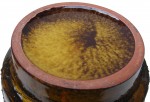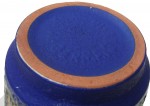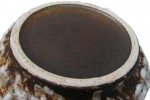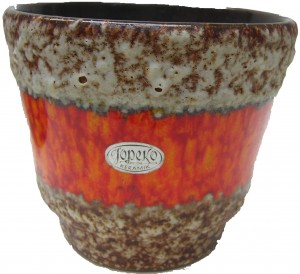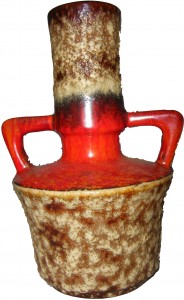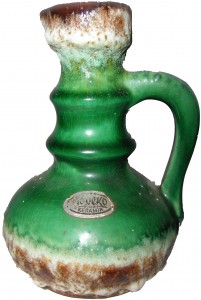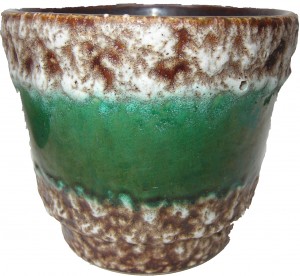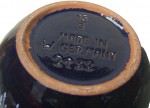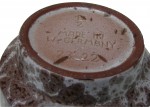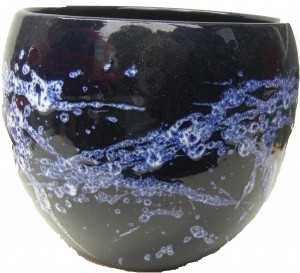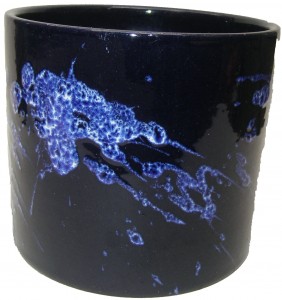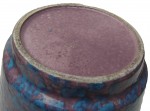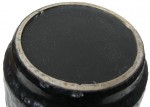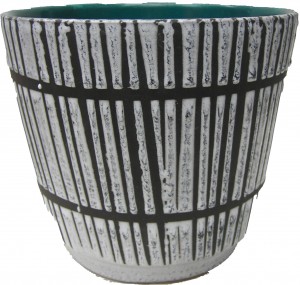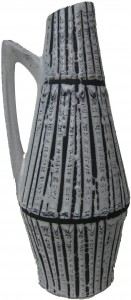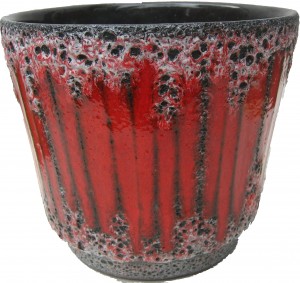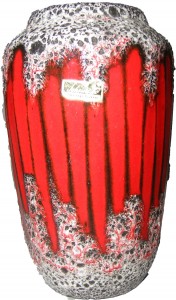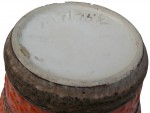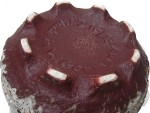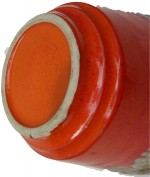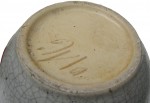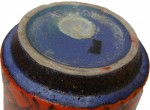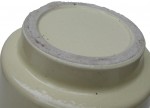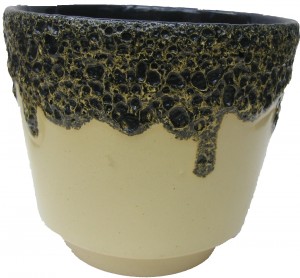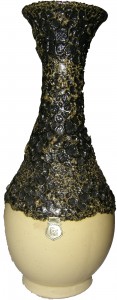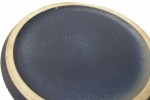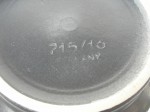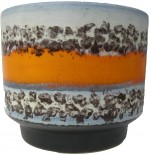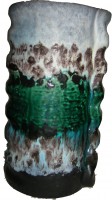General
Plant pots can be difficult to attribute to specific manufacturers because most do not have labels/stickers or any base markings which are usually used to assist identification. The three principle means of identification are:
- Base markings – Unfortunately few plant pots have any base markings – Only Carstens, Roth and U Keramik marked regularly marked plant pot bases
- Stickers/Labels – Where present paper or foil labels are often the only way to positively identify the manufacture
- Glazes – Often the only means of achieving a positive ID is to identify corresponding glazes from vases for which the manufacturer is known
The following section details each manufacturer showing identification tips. Images of plant pots with captions identifying the manufacturers can be found here.
Carstens
Carstens plant pots are relatively scarce, it would appear they were produced in much lower numbers than Carstens vases. The bases are usually marked with a number and the Carstens twin house logo, though this can often be difficult to see beneath the glaze. A red/brown clay was mainly used.
Jopeko
Plant pots manufactured by Jopeko are quite frequently found with original stickers indicating that they were all originally labelled. The base is unmarked and items made from white clay. Most of the plant pots have the same glaze decors as those produced on Jopeko vases (to see a selection of glazes click here).
Roth
Roth plant pots are almost always marked on the base. The text, numbers, style of lettering and the layout are all distinct to Roth. One of the most defining characteristics is that the text is written horizontally and does not follow the circular base outline. A red/brown clay is usually used. The most common décor used was a deep blue base glaze with a white ‘paint splash’ type detail, shown below.
Scheurich
Scheurich did not mark the bases of the plant pots. Some are found with original stickers/labels (for examples of these labels see here). The clay colour used is usually white. Many of Scheurichs glazes are distinctive and these can often be used to identify the manufacturer through comparing plant pot glazes with those of Scheurich’s vases (to see a selection of glazes click here).
Ü Keramik
Most Ü Keramik items have incised numbering and some also have text. The typeset is quite distinctive, to see more examples see here. As with all rules there are exceptions and some items have no markings on the bottom. Plant pots are often found with Ü Keramik stickers/labels (for examples of labels see here). A white clay is used.
Silberdistel
Silberdistel used bright white clay. A range of base markings used, they are mainly hand marked with a number (which is usually difficult/impossible to discern). The base edge if often hand stamped with W-GERMANY. Small circular green felt pads were sometimes attached to the base to stop items marking fragile surfaces. Items are relatively scarce.
ES Keramik
ES Keramik did not mark the base of plant pots. A white coloured cay was used in production. Items can only be identified by the presence of an original sticker or through comparison of known ES vase décors.
D & B
Dumler & Breiden marked most plant pot bases. The markings are usually incised (either moulded or hand stamped) and the typeface used is distinctive to D & B. Sometimes the markings include interlocked DB symbol. To see more examples of D & B pottery stamps see here. Like many manufacturers the same décors were sometimes used on plant pots and vases, the example shown below shows the D & B ‘polar‘ décor.




